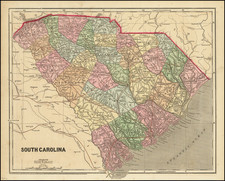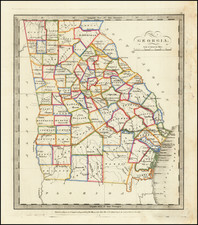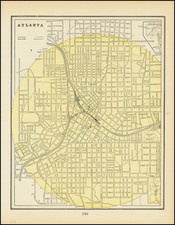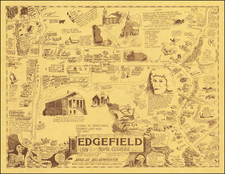A handsome 18th-century example of John Norman's antique engraved chart of the coasts of Georgia and South Carolina; only the second large-scale American chart of the area ever published, following William Clark's 1789-'90 chart of the area.
The chart reaches south to St. Johns River and what is now Jacksonville, Florida. In the north it almost reaches Charleston, ending at James Island, South Carolina. In Georgia, St Simons Island and Inlet are illustrated and named (Sea Island, Georgia) and the city of Savannah is illustrated and labeled. In the lower right, an inset chart of "Charles Town" harbor is titled "A Chart of the Bar and Harbour of Charles Town."
The American Revolution brought an end to Britain's leading role in the mapping of America. The task now fell to the American publishing industry, still in its infancy, but with direct access to new surveys that were documenting the rapid growth of the nation. In particular, there was a need for nautical charts for use by the expanding New England commercial fleets. The first American marine atlas, Matthew Clark's A Complete Set of Charts of the Coast of America, was published in Boston in 1790.
In 1791 John Norman of Boston first published The American Pilot, containing the navigation of the sea coast of North America... Norman's Pilot was the second sea atlas published in America. (Norman also had a part in Clark's Pilot, as he was the engraver for a majority of the charts.) In 1794, William Norman appeared as the publisher of this Pilot, taking over from John Norman.
States of the Chart
According to Wheat & Brun (600 & 607) the three states of the chart can be differentiated as follows:
1. Shute's Folly in the inset of Charleston Harbor is erroneously labeled "Shules Folly". Leventhal Center example.
2. Shute's Folly is now labeled "Shutes Folly".
3. In the main chart, the five islands in "Altamaha In" have been completely shaded in. Leventhal Center example.
Thus, this is an example of the second state.
Rarity
According to our records, both examples to appear at auction in the last 20 years have been 19th-century editions.











![County Map of the States of Georgia and Alabama [Insets of Atlanta and Savannah]](https://storage.googleapis.com/raremaps/img/small/69561.jpg)


